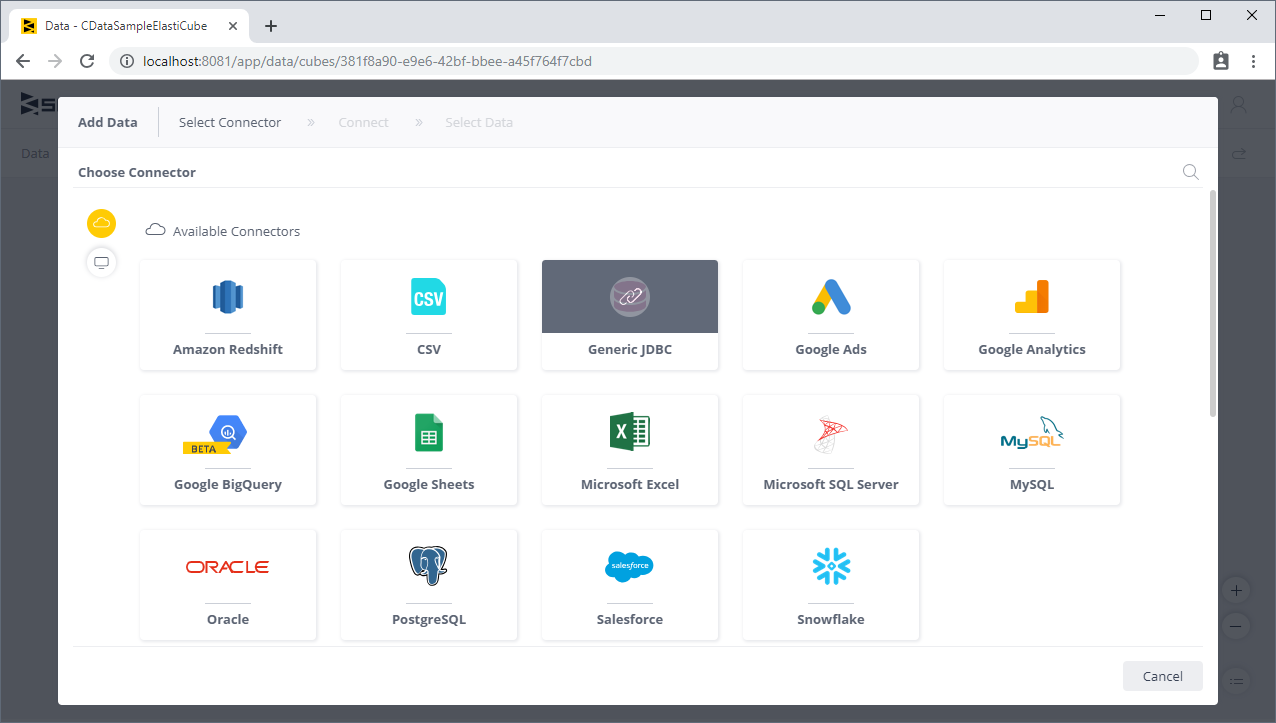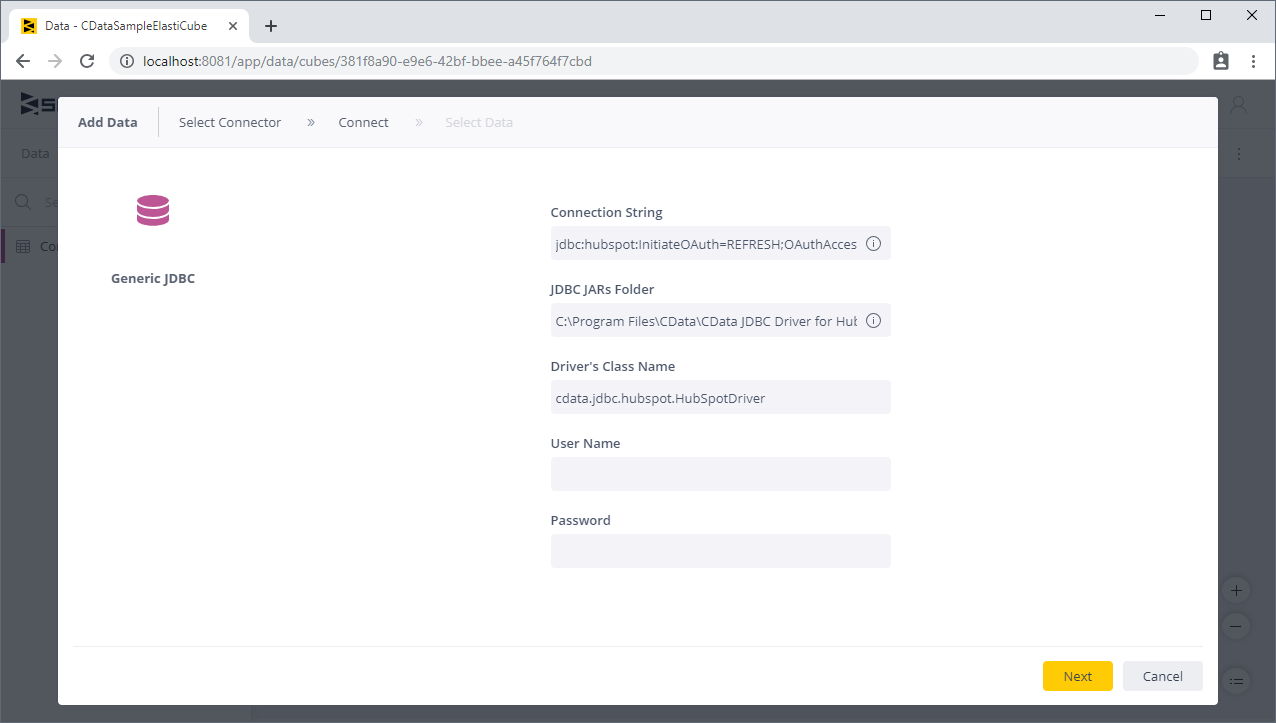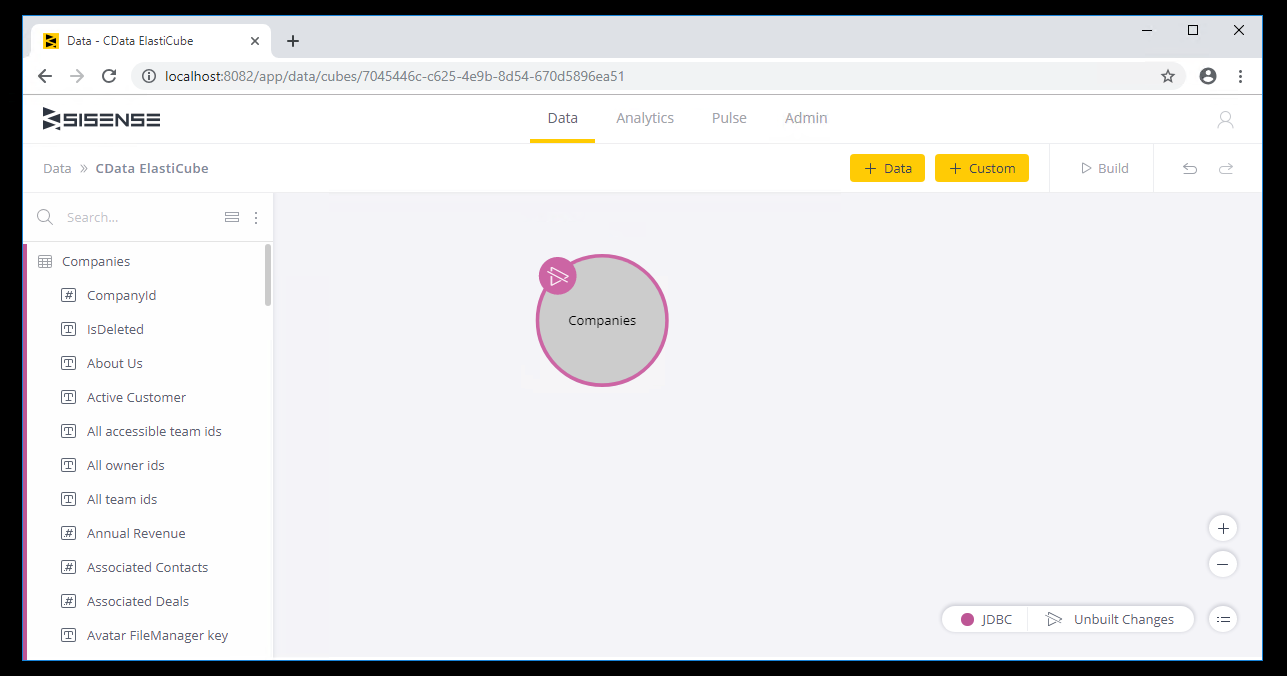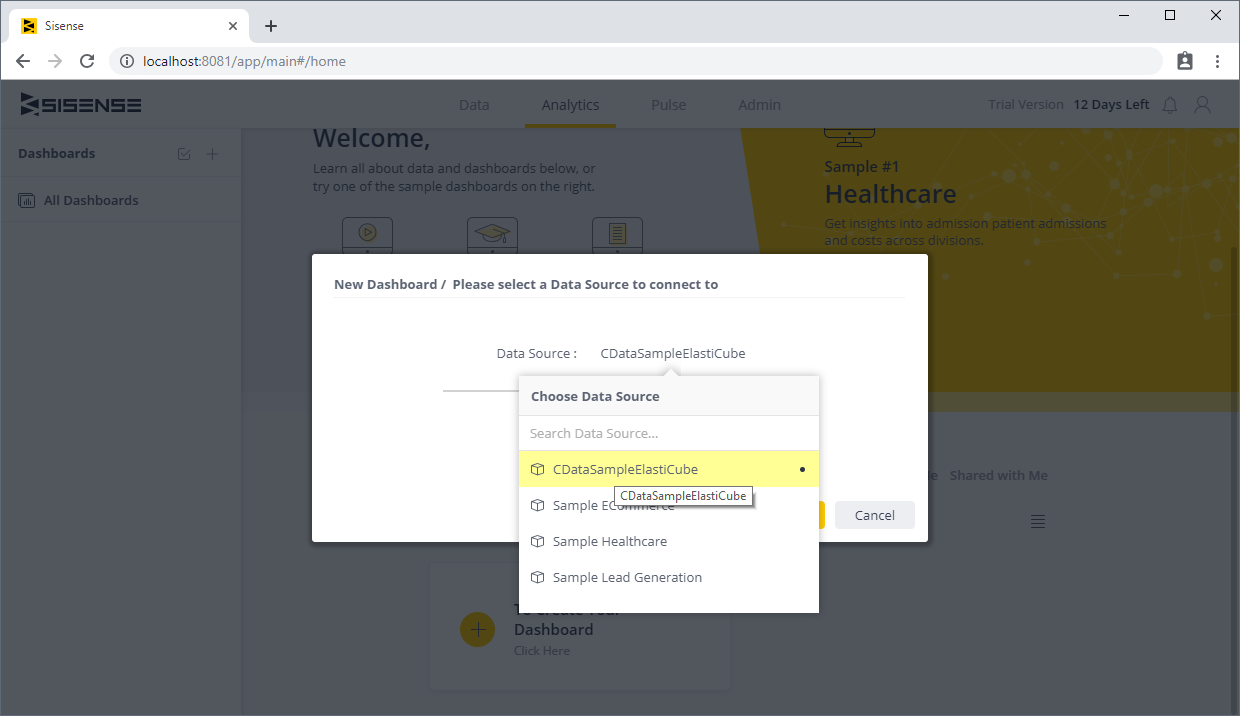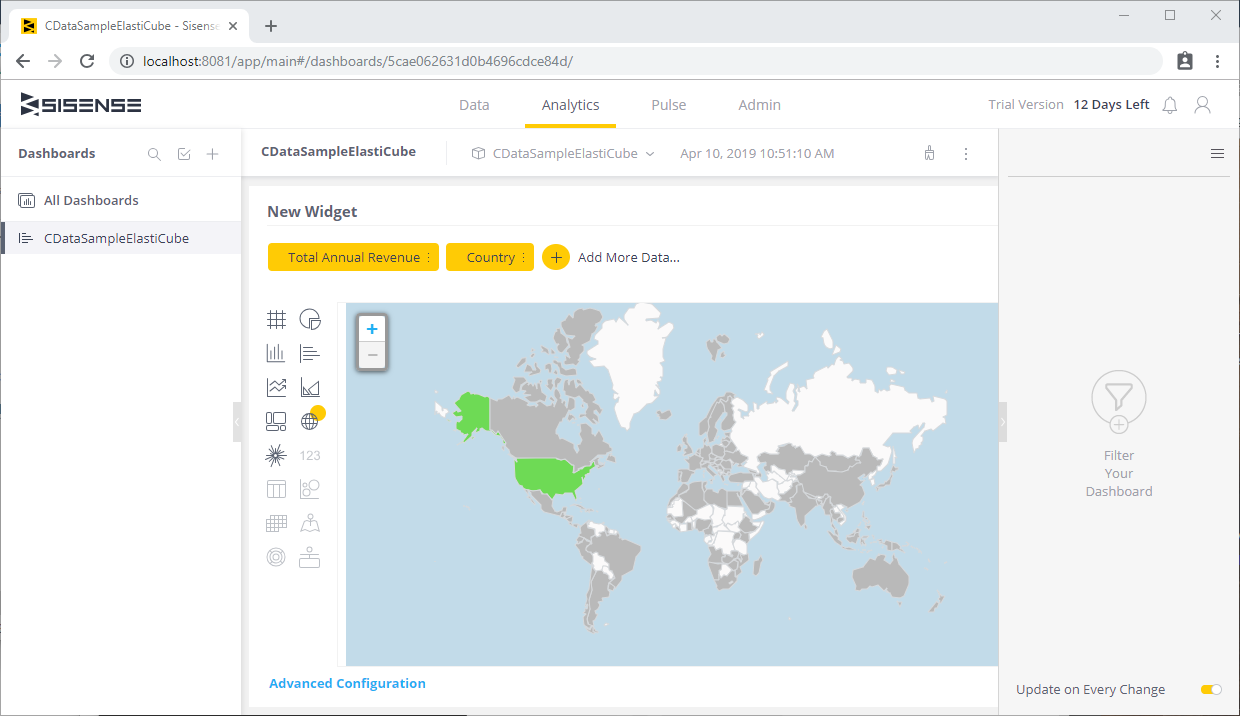Model Context Protocol (MCP) finally gives AI models a way to access the business data needed to make them really useful at work. CData MCP Servers have the depth and performance to make sure AI has access to all of the answers.
Try them now for free →Visualize Salesforce Data in Sisense
Create an ElastiCube in Sisense app with access to Salesforce data.
Sisense lets you join, analyze, and picture data to make more intelligent business decisions and craft effective strategies. The CData JDBC Driver for Salesforce makes it easy to integrate with Salesforce data in Sisense. This article shows how to create an ElastiCube that connects to Salesforce data and use the ElastiCube to visualize Salesforce data in Sisense.
About Salesforce Data Integration
Accessing and integrating live data from Salesforce has never been easier with CData. Customers rely on CData connectivity to:
- Access to custom entities and fields means Salesforce users get access to all of Salesforce.
- Create atomic and batch update operations.
- Read, write, update, and delete their Salesforce data.
- Leverage the latest Salesforce features and functionalities with support for SOAP API versions 30.0.
- See improved performance based on SOQL support to push complex queries down to Salesforce servers.
- Use SQL stored procedures to perform actions like creating, retrieving, aborting, and deleting jobs, uploading and downloading attachments and documents, and more.
Users frequently integrate Salesforce data with:
- other ERPs, marketing automation, HCMs, and more.
- preferred data tools like Power BI, Tableau, Looker, and more.
- databases and data warehouses.
For more information on how CData solutions work with Salesforce, check out our Salesforce integration page.
Getting Started
Configure the Connection to Salesforce
Before creating the ElastiCube, note the installation location for the JAR file for the JDBC Driver (typically C:\Program Files\CData\CData JDBC Driver for Salesforce 20XX\lib) or copy the jar file (cdata.jdbc.salesforce.Salesforce.jar) to a new folder in the Sisense JDBC driver directory (typically C:\ProgramData\Sisense\DataConnectors\jdbcdrivers).
- In the Data page of the Sisense application, create a new ElastiCube (or open an existing one).
- In the Model Editor, click "+ Data" to open the Add Data dialog box.
- Click Generic JDBC to open the JDBC settings.
![Connecting via JDBC]()
- Set the connection string property to the JDBC URL for Salesforce, adding required properties.
There are several authentication methods available for connecting to Salesforce: Login, OAuth, and SSO. The Login method requires you to have the username, password, and security token of the user.
If you do not have access to the username and password or do not wish to require them, you can use OAuth authentication.
SSO (single sign-on) can be used by setting the SSOProperties, SSOLoginUrl, and TokenUrl connection properties, which allow you to authenticate to an identity provider. See the "Getting Started" chapter in the help documentation for more information.
Built-in Connection String Designer
For assistance in constructing the JDBC URL, use the connection string designer built into the Salesforce JDBC Driver. Either double-click the JAR file or execute the jar file from the command-line.
java -jar cdata.jdbc.salesforce.jarFill in the connection properties and copy the connection string to the clipboard.
![Using the built-in connection string designer to generate a JDBC URL (Salesforce is shown.)]()
When you configure the JDBC URL, you may also want to set the Max Rows connection property. This will limit the number of rows returned, which is especially helpful for improving performance when designing reports and visualizations.
A typical example follows:
jdbc:salesforce:User=username;Password=password;SecurityToken=Your_Security_Token; - Set the JDBC JARs folder property to the location of the CData JDBC Driver JAR file (see above).
- Set the driver's class name to the class name for the JDBC Driver: cdata.jdbc.salesforce.SalesforceDriver
- Leave the username and password properties blank.
- Click Next.
![A configured connection in Sisense (HubSpot is shown).]()
Add Salesforce Data to an ElastiCube
Once you are connected to Salesforce, you can add tables and views to your ElastiCubes.
- From the Tables list, select the tables and/or views you wish to work with.
- (Optional) Click "+" to customize the data you want to import with SQL.
- Click Done.
![Selected tables to add to the ElastiCube]()
- Click Build to build the ElastiCube for analytics.
Visualize Salesforce Data
With Salesforce tables added to your ElastiCube, you can perform analytics on your Salesforce data.
- Navigate to the Analytics page of the Sisense application
- Select a Dashboard (or create a new one)
- Select your Data Source and click Create
![Selecting the newly created ElastiCube]()
- Click "+ Select Data" and choose fields to add to your visualization.
![Visualizing data in Sisense (HubSpot is shown).]()
With the CData JDBC Driver for Salesforce, you can access Salesforce data right in Sisense for powerful visualization and analytics. Download a free, 30-day trial and start working with Salesforce data in Sisense today!

